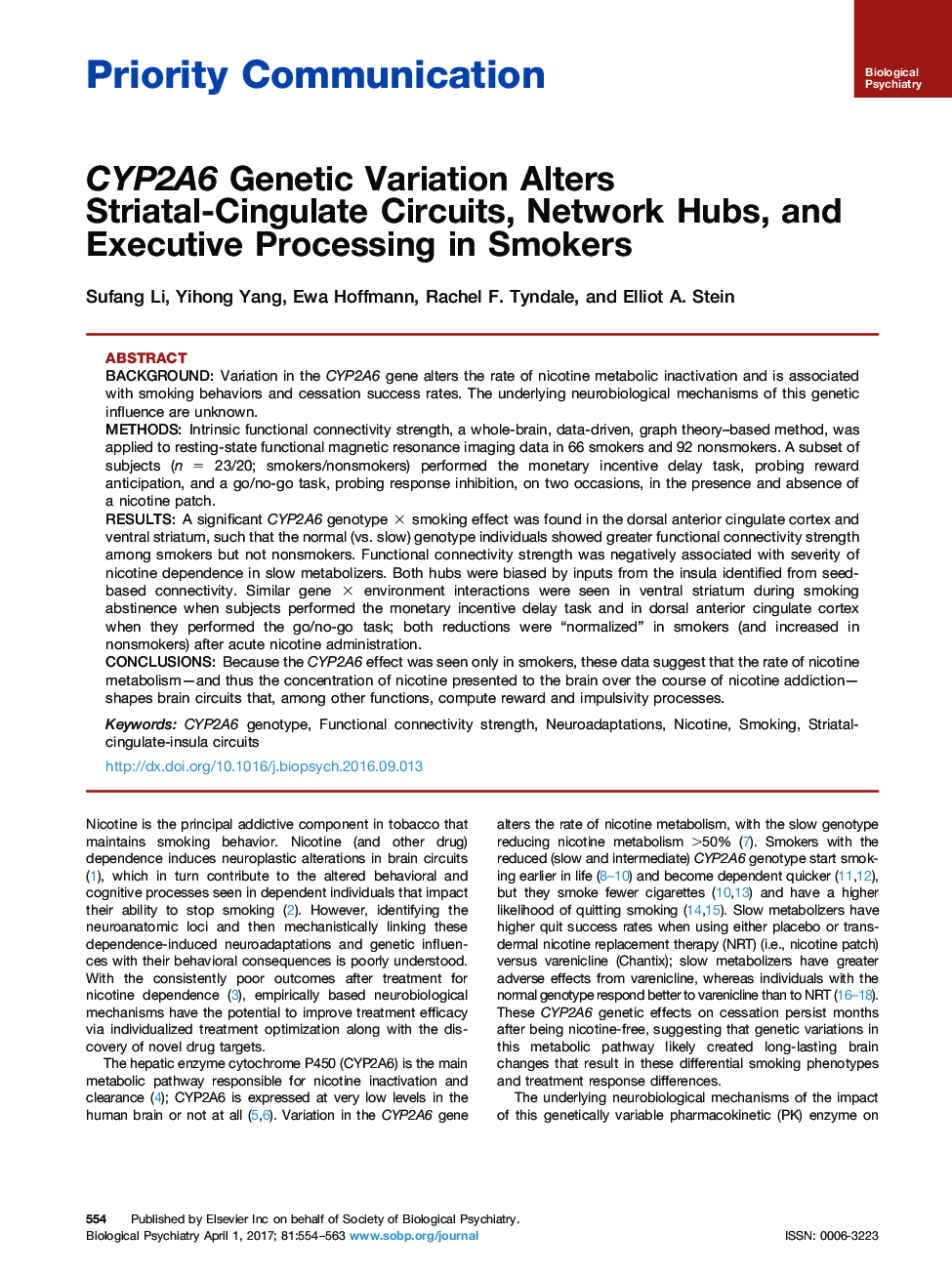| Article ID | Journal | Published Year | Pages | File Type |
|---|---|---|---|---|
| 5720564 | Biological Psychiatry | 2017 | 10 Pages |
BackgroundVariation in the CYP2A6 gene alters the rate of nicotine metabolic inactivation and is associated with smoking behaviors and cessation success rates. The underlying neurobiological mechanisms of this genetic influence are unknown.MethodsIntrinsic functional connectivity strength, a whole-brain, data-driven, graph theory-based method, was applied to resting-state functional magnetic resonance imaging data in 66 smokers and 92 nonsmokers. A subset of subjects (n = 23/20; smokers/nonsmokers) performed the monetary incentive delay task, probing reward anticipation, and a go/no-go task, probing response inhibition, on two occasions, in the presence and absence of a nicotine patch.ResultsA significant CYP2A6 genotype à smoking effect was found in the dorsal anterior cingulate cortex and ventral striatum, such that the normal (vs. slow) genotype individuals showed greater functional connectivity strength among smokers but not nonsmokers. Functional connectivity strength was negatively associated with severity of nicotine dependence in slow metabolizers. Both hubs were biased by inputs from the insula identified from seed-based connectivity. Similar gene à environment interactions were seen in ventral striatum during smoking abstinence when subjects performed the monetary incentive delay task and in dorsal anterior cingulate cortex when they performed the go/no-go task; both reductions were “normalized” in smokers (and increased in nonsmokers) after acute nicotine administration.ConclusionsBecause the CYP2A6 effect was seen only in smokers, these data suggest that the rate of nicotine metabolism-and thus the concentration of nicotine presented to the brain over the course of nicotine addiction-shapes brain circuits that, among other functions, compute reward and impulsivity processes.
